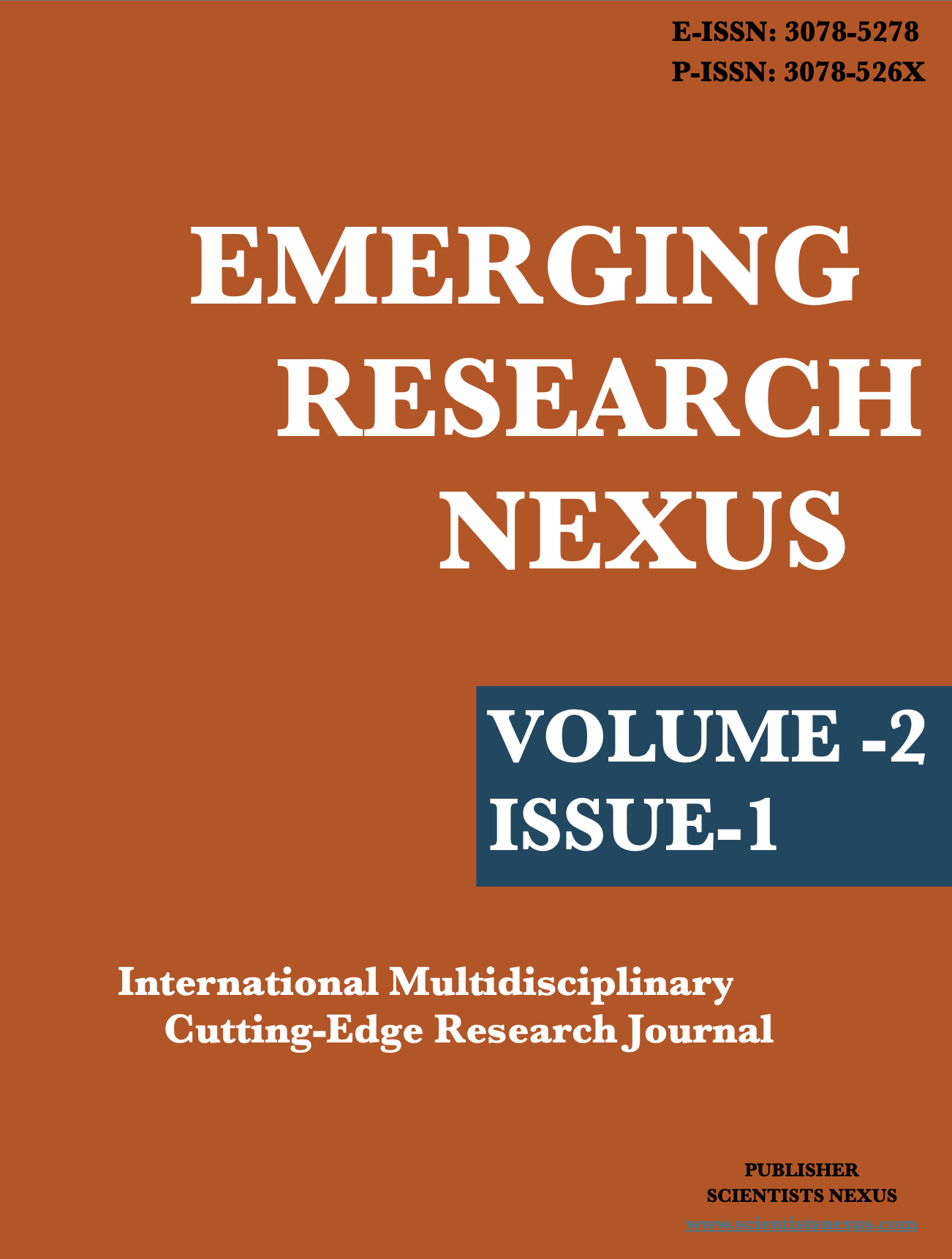Antimicrobial Activity of Cinnamomum Camphora against Pathogens Isolated from Burn Patient
DOI:
https://doi.org/10.70788/ern.2.1.2025.9Keywords:
Cinnamomum camphora (kafor),, Burn Patient, PathogensAbstract
Cinnamomum camphora, a medicinal herb belonging to the family Lauraceae, is known for its potential therapeutic applications. This study aimed to evaluate the antibacterial activity of C. camphora against pathogens isolated from burn patients. The prepared extracts were tested using the agar well diffusion method, employing solvents such as acetone, chloroform, distilled water, ethanol, hexane, and methanol. The antibacterial activity was assessed against Staphylococcus aureus and Escherichia coli, with zones of inhibition measured in millimeters. The ethanolic extract exhibited significant antibacterial activity, with inhibition zones of 14 mm for E. coli and 15 mm for S. aureus. Similarly, acetonic, ethanolic, methanolic, and aqueous extracts demonstrated larger zones of inhibition, indicating their potential to resist microbial growth. In contrast, chloroform and hexane extracts did not exhibit antibacterial activity against either E. coli or S. aureus.
References
• Agarwal, A. (2005). Critical issues in quality control of herbal products. Pharma Times, 3(1), 9-11.
• Ayyanar, M., & Ignacimuthu, S. (2009). Herbal medicines for wound healing among tribal people in Southern India: Ethnobotanical and scientific evidence. International Journal of Applied Research in Natural Products, 2(3), 29-42.
• Chelliah, D. A. (2008). Biological activity prediction of an ethnomedicinal plant Cinnamomum camphora through bioinformatics. Ethnobotanical Leaflets, 2008(1), 22.
• Gao, M., Wang, Z., Wang, H., Zhang, H., Zheng, R., & Li, P. (2021). Cinnamomum camphora-derived biochar effects on soil pH, enzyme activity, and microbial community in agricultural settings. Environmental Pollution, 286, 117351.
https://doi.org/10.1016/j.envpol.2021.117351
• Gill, A. O., & Holley, R. A. (2004). Mechanisms of bactericidal action of cinnamaldehyde against Listeria monocytogenes and of eugenol against L. monocytogenes and Lactobacillus sakei. Applied and Environmental Microbiology, 70(10), 5750-5755.
• Jantan, I. B., Karim Moharam, B. A., Santhanam, J., & Jamal, J. A. (2008). Correlation between chemical composition and antifungal activity of the essential oils of eight Cinnamomum species. Pharmaceutical Biology, 46(6), 406-412.
• Lall, N., & Meyer, J. (2000). Antibacterial activity of water and acetone extracts of the roots of Euclea natalensis. Journal of Ethnopharmacology, 72(1-2), 313-316.
• Li, J., Chen, L., Bai, X., & Huang, X. (2020). Antibacterial and antifungal activities of essential oils from Cinnamomum camphora var. linaloolifera leaves. BMC Complementary Medicine and Therapies, 20(1), 1-9. https://doi.org/10.1186/s12906-020- 02860-6
• Mohammed, S. A., & Saroj, K. K. (2021). Phytochemical composition and antimicrobial activity of Cinnamomum camphora essential oils against drug-resistant pathogens. Journal of Applied Microbiology, 131(3), 978-990. https://doi.org/10.1111/jam.14997
• Paranagama, P., Wimalasena, S., Jayatilake, G., Jayawardena, A., Senanayake, U., & Mubarak, A. (2001). A comparison of essential oil constituents of bark, leaf, root, and fruit of cinnamon (Cinnamomum zeylanicum Blum) grown in Sri Lanka. Journal of the National Science Foundation of Sri Lanka, 29(3-4), 147-153.
• Sahraei, S., Mohkami, Z., Golshani, F., Javadian, F., Saeidi, S., & Baigi, G. S. (2014). Antibacterial activity of five medicinal plant extracts against some human bacteria. European Journal of Experimental Biology, 4(1), 194-196.
• Sun, J., Liu, Y., & Zhang, H. (2023). Antibacterial and anti-inflammatory properties of Cinnamomum camphora essential oil against respiratory infections. Phytomedicine, 112, 154146. https://doi.org/10.1016/j.phymed.2023.154146
• Wang, S. J., Zheng, J. L., Wang, Y. J., Yang, Q. F., Chen, T. T., Chen, Y. L., et al. (2021). Biochar amendment effects on chlorophyll fluorescence and physiological responses in Cinnamomum camphora. Frontiers in Plant Science, 12, 650432. https://doi.org/10.3389/fpls.2021.650432
• Xu, C., Wang, Y., & Zhang, J. (2022). Evaluation of Cinnamomum camphora essential oil as a natural antimicrobial agent in food preservation. Food Chemistry, 371, 131130. https://doi.org/10.1016/j.foodchem.2021.131
Downloads
Published
Issue
Section
License

This work is licensed under a Creative Commons Attribution-NonCommercial-NoDerivatives 4.0 International License.
Commons Attribution-NonCommercial-NoDerivatives 4.0 International License





